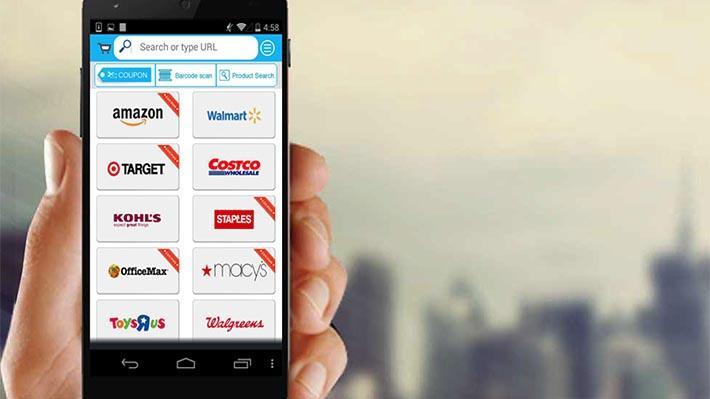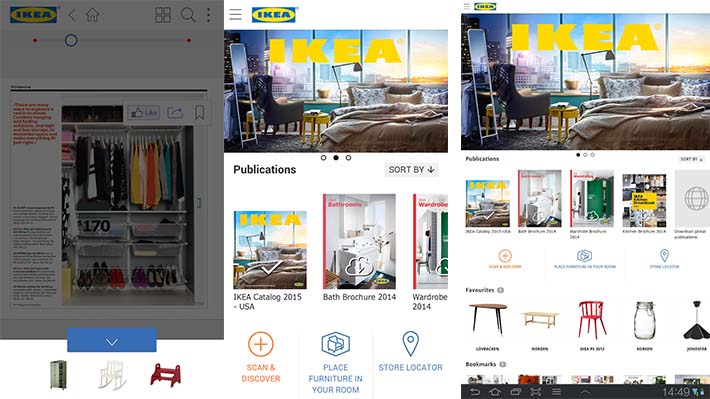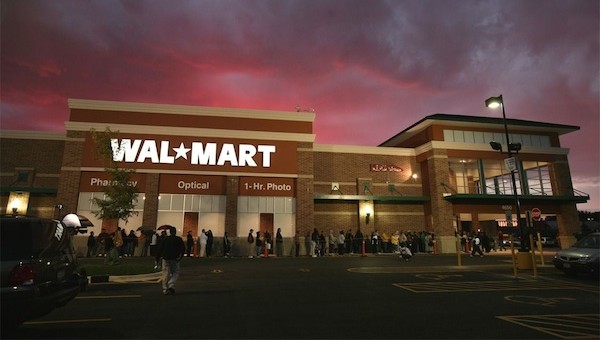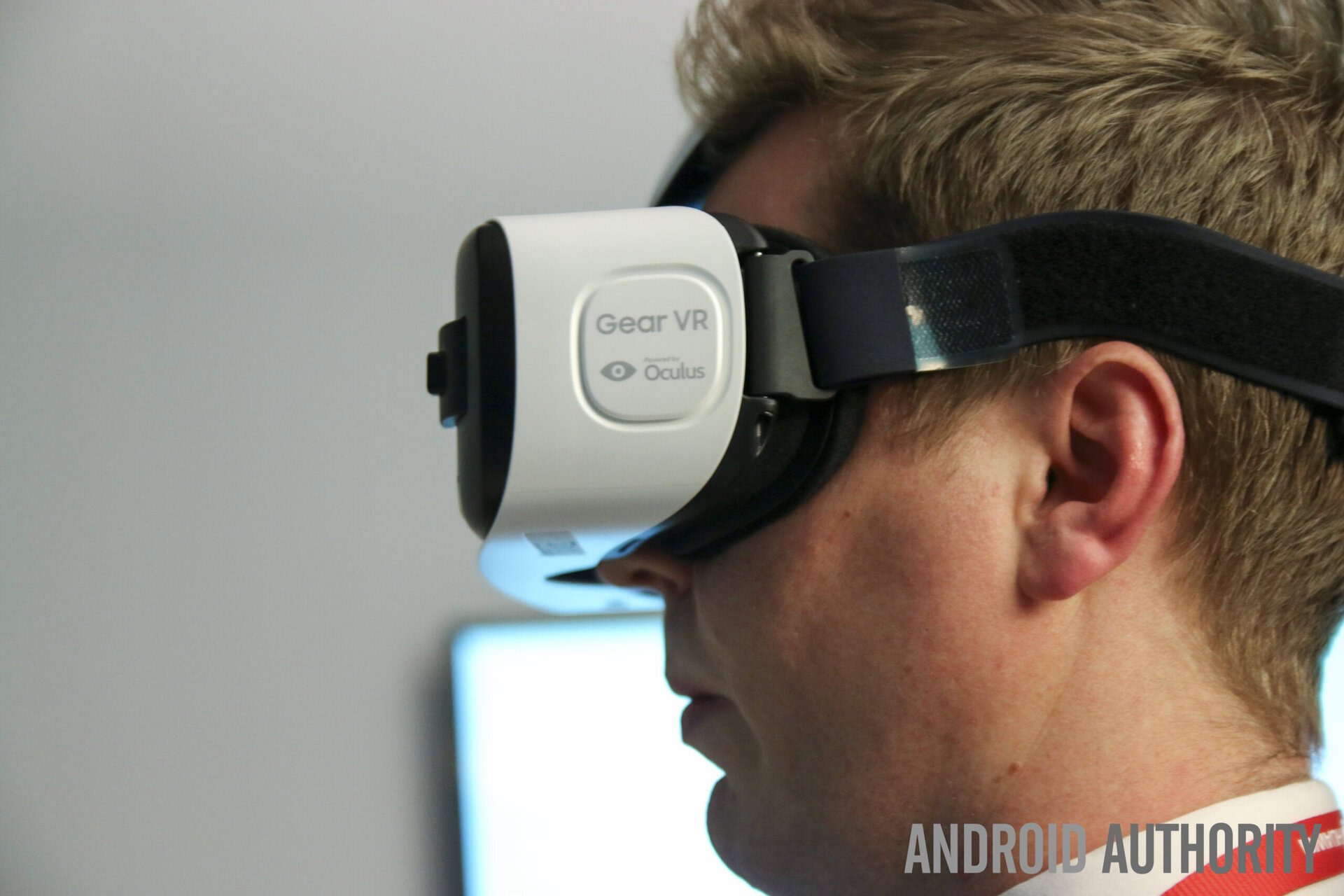Affiliate links on Android Authority may earn us a commission. Learn more.
How smartphones are changing the way we shop

When’s the last time you made a big purchase without using your smartphone? You may not have actually completed the sale with your phone, but you probably used it to research what you were buying. Our smartphones are playing a bigger role in our shopping than ever before.
By last summer, according to IMRG Capgemini research, 52% of all traffic to retail websites in the UK was coming from smartphones or tablets. Increased confidence and improved app and mobile website design is contributing to growth in completed sales on mobile as well, a recent study from The Integer Group found that 35% of shoppers make purchases on their mobile devices now, up from 25% in 2012.
Retailers have plans to take things much further. Smartphones could become our primary shopping devices in the not too distant future.
Smartphones as a shopping platform

The list of things we use smartphones for when shopping right now is long – we use them to find stores, compare prices, find detailed info on products, research user reviews, create shopping lists, find and use coupons and vouchers, and check related social media. All that comes before we actually purchase, which is sometimes done on the phone, or, as mobile payments take off, completed using the phone. Even once the purchase is complete we use our phones to take photos of the product, post to social media, and write reviews.
Many of the functions we’re talking about here are really related to Internet access and there’s evidence to suggest that we often still prefer to actually make online purchases on a desktop or laptop. This is largely down to screen size and user interface design making purchases more difficult on mobile. IBM’s Digital Analytics Benchmark Hub found mobile in the US last Christmas accounted for 45% of all traffic, and 22.6% of sales were made on mobile devices. But screen size does matter because smartphones accounted for 31.2% of traffic, but only 9.1% of sales, while tablets accounted for 13.4% of traffic and 13.4% of online sales.
Making it easy and secure
Clearly there’s still work to be done when it comes to mobile website and app design. Trying to enter credit card details on a small screen can be a real pain. Apps and websites that save your details and allow you to make purchases with one or two taps are highlighting the way forward. But many people are still wary of sharing sensitive data on their mobiles. This is a generational thing. Newer generations are less likely to trust the process, but younger people don’t tend to have as many qualms about purchasing on mobile devices.
The fact that mobile payments are actually already more secure than credit cards is lost on many people.
The fact that mobile payments are actually already more secure than credit cards is lost on many people. As more weight is thrown behind mobile payments we’re seeing further security improvements and the introduction of biometric checks that could set minds at ease.
People had similar worries about online transactions at first, but confidence will grow as systems are proven trustworthy. We only have to look at how quickly mobile traffic and purchases are growing to see where this trend is going. What does it mean for traditional stores?
The threat to traditional bricks and mortar

Internet shopping has obviously bitten a huge chunk out of traditional retail. Why would anyone pay a premium for something just so they can buy it in a physical store?
If they can’t match the cheapest prices online then they’re going to lose customers, but how can they match those prices when they have to rent a huge retail space, furnish it, and employ sales staff?
The problem for retailers is exacerbated by mobiles because you can go into a store to get a hands-on look at a product, but the chances are good that your smartphone can provide you with better in-depth information about what you’re looking at than the sales person. It can also find you the lowest price and guide you to a rival store, or allow you to order directly online and have it delivered to your home. Traditional department stores can end up acting like show rooms for big online retailers.
If they can’t match the cheapest prices online then they’re going to lose customers, but how can they match those prices when they have to rent a huge retail space, furnish it, and employ sales staff? They have to offer some kind of additional value. For some stores it’s about quality or exclusivity, sometimes it may be expertise, but too many offer no incentive to tempt you to make a more expensive purchase with them.
Personalized advertising and tracking
Are we headed for a Minority Report future where billboards speak to us by name and stores can make personalized recommendations when we walk in the door? This is the reality of online shopping already. The ads you see as you browse around are closely based on your search and purchase history. Retailers spend millions on algorithms designed to assess your previous purchases and offer up relevant new suggestions that will prove irresistible.
The idea of a billboard calling to you, or a tailored set of products being offered up to you when you walk into a store is perfectly possible right now from a technology point of view. It’s the privacy issue that’s preventing it from becoming a reality. Tesco petrol stations in the UK already use face-scanning to identify customer age and gender and better target ads.
There’s lots of interest in retail apps that will allow the store to recognize you, track you as you browse using Bluetooth beacons, and send you personalized deals or enticements to buy. The advantage of this for retailers is obvious. The big question is why would you allow them to track you? If they don’t offer some incentive then it’s going to be a hard sell, but would you consent to use an app like that for a 10% discount?
What about augmented reality?
Some of the most exciting possibilities for retail and mobile are to be found in the realm of augmented reality. What if you could hold your phone up (or use AR glasses even) to the retail shelf in a store and have your camera recognize the product and give you detailed information on it, a list of the cheapest prices with links to buy, and a bunch of user reviews? Something like Amazon’s Firefly, but not tied to Amazon. That would make what many of us already do much faster and more convenient.
Some of the most exciting possibilities for retail and mobile are to be found in the realm of augmented reality.
Clever retailers are also starting to use AR in their apps. The Ikea app is one of the best examples, giving you an approximation of what a piece of furniture will look like in your room using your smartphone or tablet screen. Do you need to visit the store at all?
In China, Yihaodian, the largest e-commerce food retailer, is planning AR supermarkets in open city spaces where you can walk round a virtual supermarket that’s superimposed by your device, fill your basket, and have the goods delivered direct to your door later. Tesco tried something similar in the London Underground a few years back, using QR codes that allowed consumers to scan pictures on the station wall to order online for home delivery. It could be a clever way to place shops in convenient places and allow you to buy without queuing at a checkout and having to carry the goods home.

A step beyond this could be provided by fast-approaching virtual reality technology. There are already demos showing off the possibility of attending an event like a concert using the VR headset in your living room. There’s no reason the same tech couldn’t be used for shopping in a 3D environment, but with no crowds to battle and a store layout that’s been designed specifically for you.
These things may be a bit rough around the edges right now, but they’ll improve. Could we be looking at a future where the smartphone replaces the store entirely?